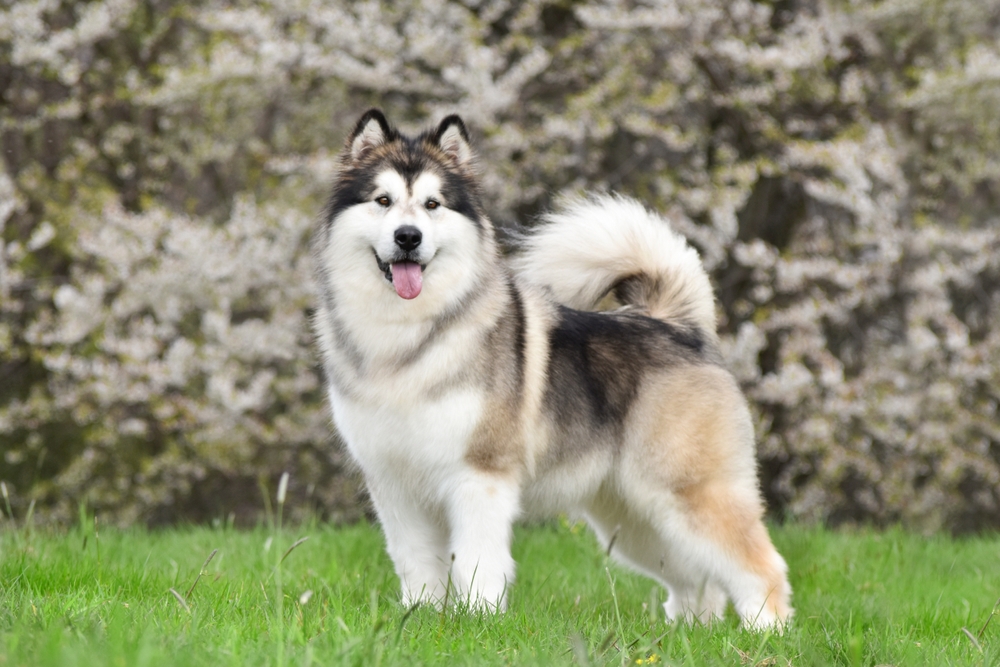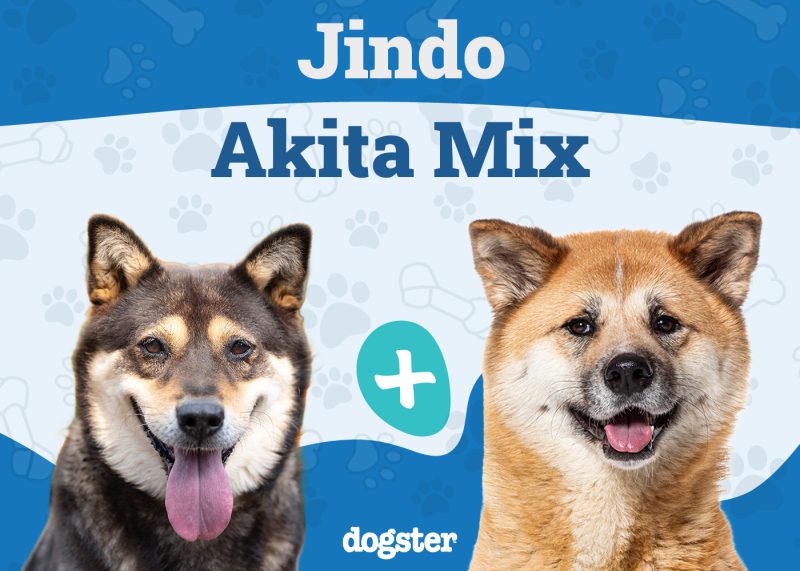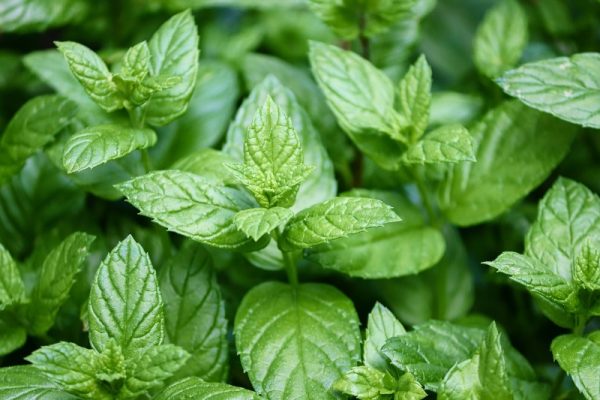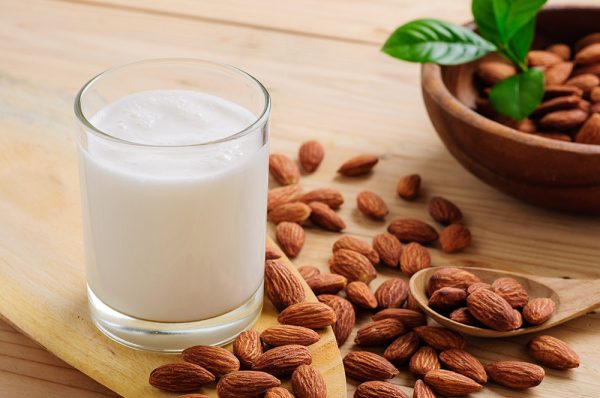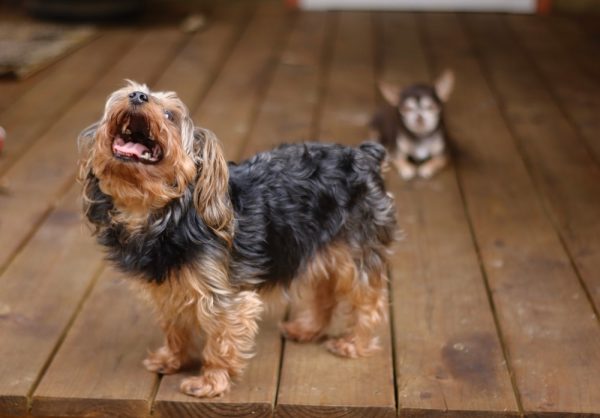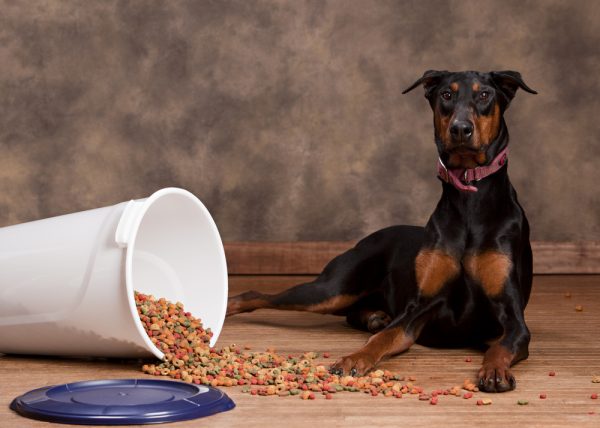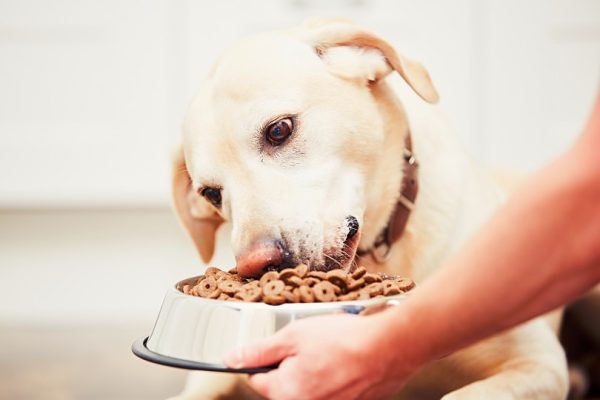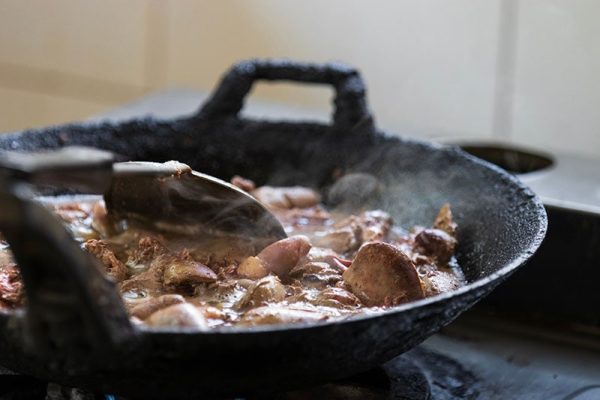In this article
View 2 More +Intelligent working dogs often bear a unique balance of benefits and challenges, and breeds like the Alaskan Malamute present both sides consistently. The ancient all-purpose canine earns adoration for their talents and devotion to family, but their independence creates plenty of training challenges. Without firm leadership, Alaskan Malamutes often take matters into their own paws or become prone to boredom and unwanted behaviors, potentially including aggression.
An aggressive Malamute can become a danger to others and themselves. A proper training approach can ensure everyone’s safety and a better quality of life as we’ll explain in this look at whether Alaskan Malamutes are aggressive.

Are Alaskan Malamutes Aggressive?
Alaskan Malamutes can be clever, energetic, easily bored, and stubborn. In many cases, inconsistent or inadequate training may create strong-willed disobedience. Aggression is rare, but a dog who loses trust in their owner or hasn’t learned proper social behavior can resort to it to accomplish their goals.
Aggression can occur for many reasons, including:
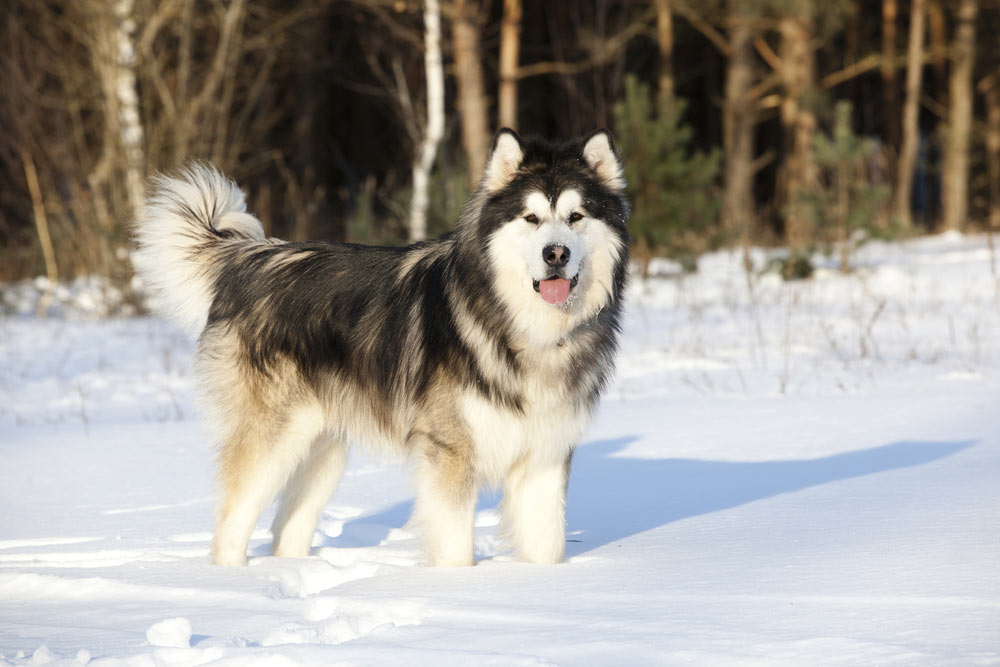
- Territoriality and possessiveness of food, toys, and other resources
- Fear or anxiety
- Injury or illness
- Protective instincts
Early socialization, consistent training, and a firm, commanding leader are essential in reducing the risk of aggression. Malamutes demand guidance from puppyhood to develop into well-adjusted, well-behaved dogs. Otherwise, owners must identify situations and sources of triggers that may cause aggression to prevent conflict and avoid bites and attacks.
How Are Alaskan Malamutes Aggressive?
Alaskan Malamutes aren’t generally inherently aggressive toward people, regardless of whether they’re family members or strangers. Due to their history as hunting companions and sled dogs, Malamutes are more likely to be friendly and tend to direct their high prey drive toward smaller animals.
A review of dog attacks from 1982 to 2006 found eight attacks by Malamutes, three of which resulted in deaths.1 The numbers are lower than for many other breeds, including the more outgoing Husky, though this may be due to the smaller population of Malamutes.
Do Malamutes Try to Dominate Owners?
A Malamute’s lack of cooperation is typically a show of their independence rather than a show of dominance over their owner. This breed tends to be more opportunistic and not as eager to please as many other breeds. Their past experiences may drive their decisions and efforts to accomplish their goals in the easiest or most enjoyable way possible.
In other words, if a Malamute learns they can get what they want by being disobedient, they’ll do it. Rather than focus on asserting dominance, owners must provide consistent training. Dependable leadership will show their dog that following directions is the best way to get what they want.
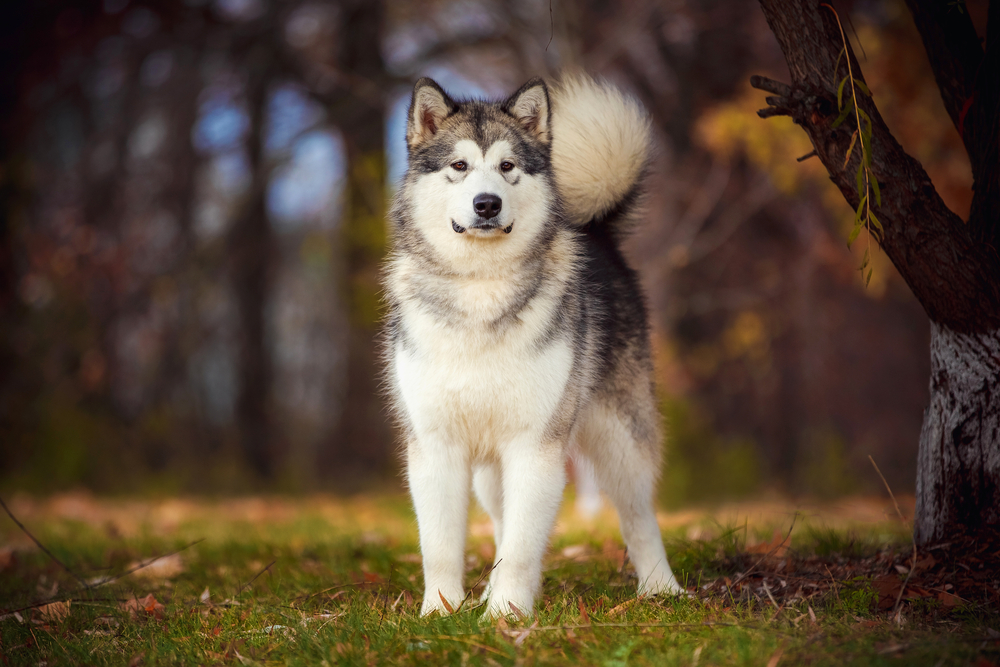
Dog Aggression
Aggression can occur between Malamutes and other dogs, particularly those of the same sex. Generally, Malamutes don’t use aggression to display dominance. Body posture and signs of submission are the best indicators of a dominant-submissive relationship, with aggression usually occurring out of fear, protection, or resource-guarding.

Signs of Aggression in Alaskan Malamutes
Defusing potentially dangerous situations can prevent substantial consequences. With bodies weighing up to 85 pounds, Malamutes have the potential to severely harm people and other dogs.
To avoid this, owners must recognize the signs of growing aggression before it ignites physical conflict. Obvious signs include growling and snarling, but other subtle posture changes can occur. An intense, steady stare can signal agitation. Aggressive dogs may try to look as physically imposing as possible by raising their tails, ears, and hackles.
Fear can also result in aggression. Fearful dogs may fold their ears and tail down or curl/lick their lips when they’re uncomfortable. When others don’t acknowledge this unease and still attempt to approach the dog, they may attack and bite to escape the situation.


How to Reduce Your Alaskan Malamute’s Aggression
Dominance and related aggressiveness aren’t personality traits common to Malamutes. Experiences and relationship dynamics will have the most significant impact on a dog’s treatment of others. Fear of harm, frustration, or protectiveness over resources can make dogs defensive, opening up the potential for aggression.
Handlers control many factors contributing to a Malamute’s aggression toward other dogs. Social learning begins within a few weeks after birth. Owners must purchase their dogs from reputable breeders who care for their puppies appropriately. Once in the home, they can work on the stubbornness and aggression that may occur from frustration, anxiety, and fear.
Socialize Your Dog as Early as Possible
Puppies demand frequent exposure to new people, animals, objects, and situations. Experiences must be positive and rewarding. Dogs who enjoy adequate socialization will build confidence and avoid uncertainty and fear in novel situations.
They will learn that others don’t pose specific threats and that calm behavior can be the most rewarding mode of operation.
Adult dogs can be socialized as well, it just may take a bit more time and patience to achieve.
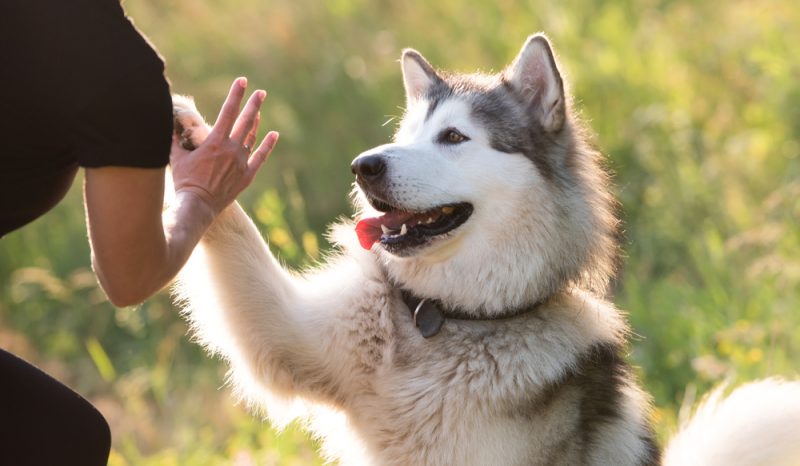
Desensitize and Counter-Condition Your Dog to Triggers
Malamutes may have inherent fears due to previous experiences or uncertainty in new situations that require extra effort to overcome. Gradual desensitization may be necessary to prevent aggression.
With this method, you’ll expose your dog to a stressor within their tolerance threshold. You’ll reward relaxed behavior with treats and play to show that the trigger isn’t threatening and that your dog can be calm without suffering negative consequences.
For example, if your dog is reactive and shows aggression toward other dogs while on a walk, you can find the distance at which they react and stay beyond that to begin desensitizing them. Your Malamute should be close enough to notice the trigger but not so close that they’ll become reactive.
From there, you can offer rewards to change their perspective and keep their focus on you. With repeated exposure, they’ll get used to the stimuli. You can then move closer as your dog’s reactive threshold shrinks, continuing to reinforce their calm behavior and focus on you. Eventually, they should be able to be around the trigger without reacting.
Identify and Control Triggers
Various objects or situations may ignite a Malamute’s aggression toward people and pets. Resource guarding is a common source of conflict. Owners must be aware of any potential triggers and deal with them immediately. Items like bones, chew toys, or food dishes are common triggers that need consideration when you offer them to avoid aggression.You may choose to remove the item or make sure there is enough to go around so that a dog doesn’t have to share. If your dog gets to where they can allow others to be near their objects, reward them.
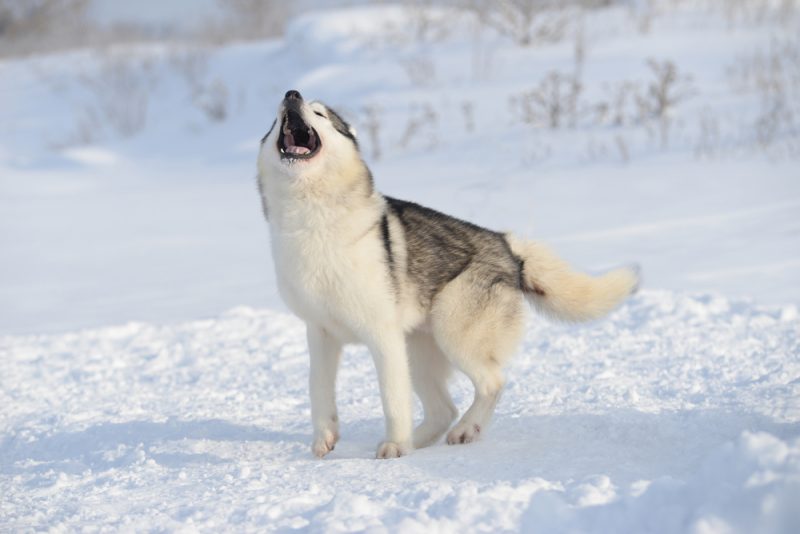
Exercise Your Dog
Malamutes are energetic and can be prone to boredom and frustration, which can manifest in undesirable behaviors. They need frequent physical and mental stimulation. Giving your dog enough exercise in daily walks, playtime, and indoor enrichment will make them more content and relaxed, reducing the chances of reactivity and aggression.
Teach “Nothing in Life Is Free”
Alaskan Malamutes will take advantage of owners who train inconsistently and don’t demand obedience. Using a nothing-in-life-is-free method is one way of correcting this and enforcing the idea that all good things come through you.
With this practice, owners have dogs ask permission for anything they want. Your Malamute may want to go outside, have a meal, receive affection, or gain access to something else. In these moments, make them calm down and perform a command (e.g., a sit) to earn it. Doing this consistently can help your dog learn to defer to you and may mitigate aggression between household dogs.

Final Thoughts
Alaskan Malamute’s aren’t inherently aggressive, but they can be stubborn and challenging to train. Firm consistency and socialization are needed to ensure that these dogs feel comfortable and confident in situations in order to prevent aggression.
Malamutes are also affectionate and outgoing. Owners can nurture these traits through dependable leadership. Positive reinforcement training, early socialization, and awareness of triggers are an owner’s obligations, offering a blueprint for preventing aggressive and unwanted behaviors.
Featured Image Credit: Hanna Borysenko, Shutterstock
